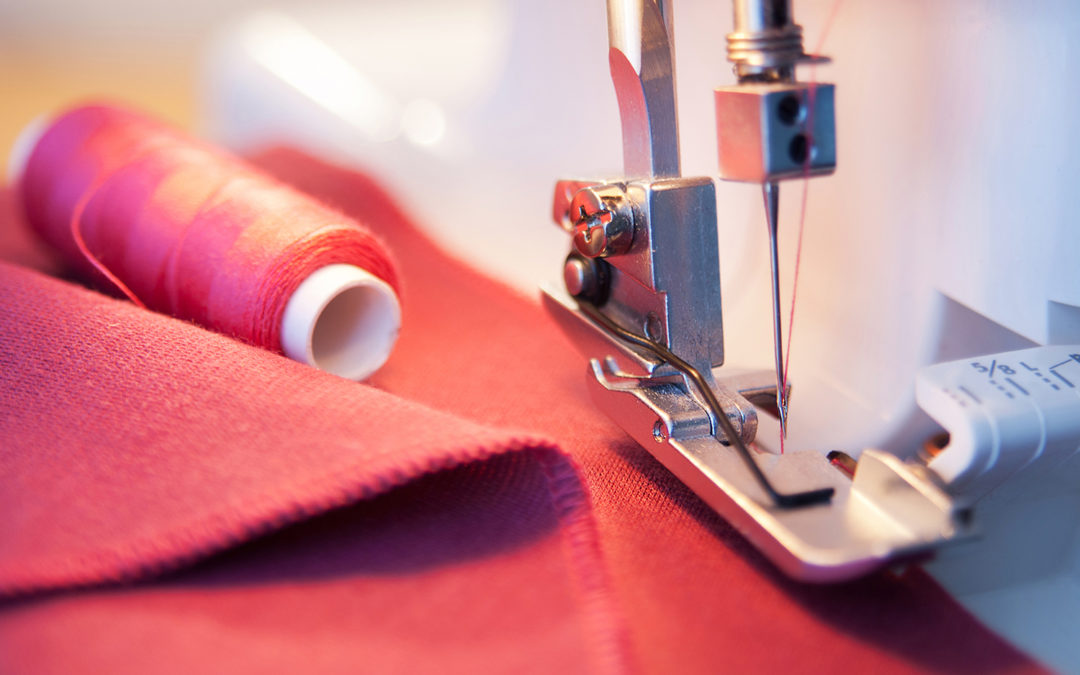By Elizabeth Hunter
I’VE ONLY BEGUN TO LEARN about quilting, but I’ve wanted to sew ever since I was a young child. At age 7, I came across an ad for a “first sewing machine” that claimed to be child-safe and able to sew anything.
That was great news: I had a homemade dollhouse that needed curtains, a much-loved bear with nothing to wear and a younger brother who might want a doll.
I wasn’t allowed to use Mom’s Singer, with its powerful foot pedal and a needle that she said “could go right through my finger.” But the machine in the ad sounded just right. I mailed the company my $6.95, plus postage—all the money I had.
When it finally arrived, the tiny, plastic machine wasn’t the treasure I’d imagined. It moved at a snail’s pace. When I slid my fabric off the needle plate, the stitching fell apart. Huge, disconnected loops covered the back side. Additional attempts produced the same, sad result. I had the idea to run a thread through all the loops and tighten each stitch by hand, but it took forever and looked awful.
After that day, I’m not sure what became of the toy sewing machine, but I became a cynic about toy marketing.
I hand-stitched projects until a few years later when my mom gave me lessons on her Singer. That was followed by sewing and engineering adventures with my cousin Christina, on Grandma’s fancier, knee-lever machine. Thanks to their lessons, I’ve sewn everything from camp shorts and scout vests to simple dresses and one first-place children’s costume at a Harry Potter festival.
But even if I’d never used a needle or a bobbin, the sewing and quilting metaphors in Gather’s three-session summer Bible study, “Crafted in Christ,” would resonate. Study author Katie Hines-Shah, pastor at Redeemer Lutheran Church in Hinsdale, Illinois, helped us last month to consider how we choose patterns and plans. For the next two months, she’ll have us examine the ways that cutting and piecing, as well as binding, apply to not only quilts, but our lives and our worshiping communities.
There’s a lot to enjoy in this issue. Mary Dixon (p. 6) remembers the childhood delight of sitting under a quilt frame. Both Pastor Susan Sparks and Cara Strickland encourage us to cut (and prune) so we can enjoy sabbath rest and focus on what matters most (pp. 5, 12). The good news of God’s love comes through loud and clear in Pastor Jennifer Ginn’s account of purses and real treasure (p. 44) and Anne Basye’s article about Lutherans who wrap neighbors across the globe in Lutheran World Relief quilts (p. 8). Finally, Pastor Emmy Kegler’s “truth about sadness” (p. 32) removes stigma and sheds biblical and practical light on issues surrounding depression.
Recently, during a difficult week at my house, my brother sent me a photo via text, adding a heart emoji. Inside a storage box at his family’s house, he’d found some keepsakes, including the doll I’d made him long ago. Over the years, I’d forgotten its wildly patterned body, awkwardly stitched together with yarn; the red yarn heart I’d sewn on its chest; and the glued-on, quilt-batting hair. The photo showed that only one button eye remained. Suddenly I remembered what matters most: God’s grace, and our response—our small, imperfect gifts that are both given and received in love.
Elizabeth Hunter serves as editor of Gather.



I have received the Gather magazine and I truly enjoyed this article. Month after month for 20 years I have led the Bible Study for our church circle, including a few other women from other area churches. I will run this article off for them also to read.
Frances, we’re so glad you enjoyed the article!